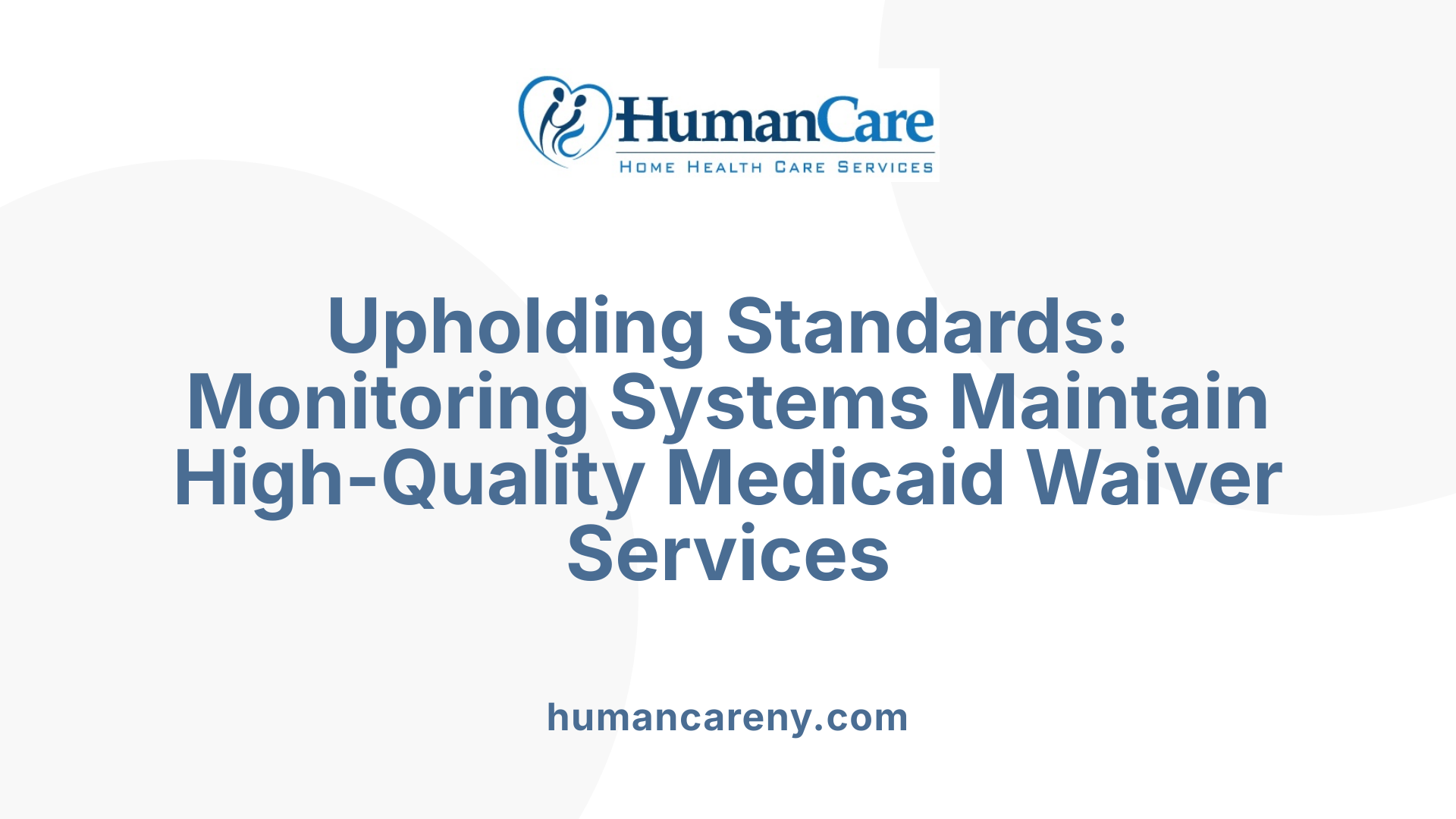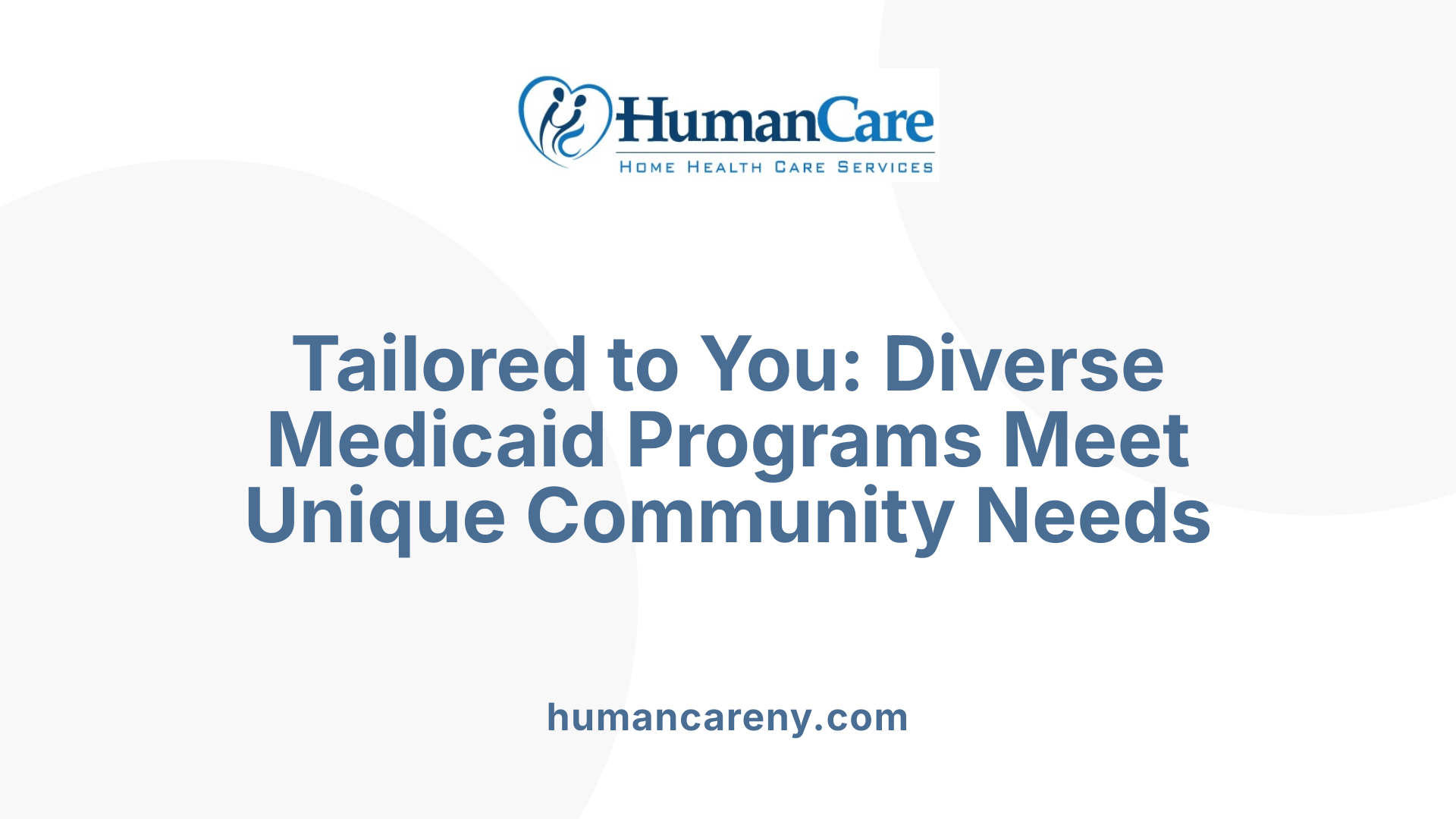Setting the Stage for Medicaid Waiver Success
Medicaid waiver programs have become indispensable in enabling elderly and disabled individuals to remain in their homes and communities rather than entering institutional facilities. These programs offer a spectrum of tailored home and community-based services designed to meet diverse needs while promoting autonomy and quality of life. Understanding the critical success factors of Medicaid waiver programs is essential for policymakers, service providers, clients, and families who rely on these supports. This article explores the pillars behind effective program delivery, focusing on coordinated care, consumer direction, accountability, and comprehensive service offerings.
Consumer Directed Care: Empowering Choice and Control

What is the Consumer Directed Personal Assistance Program (CDPAP) and what benefits does it offer?
CDPAP is a Medicaid-supported program that allows clients to hire and manage their own personal care aides, offering greater control over in-home care. This model supports the recruitment of caregivers who can be friends, family, or neighbors, providing personalized assistance that aligns with individual preferences and needs. By empowering clients to direct their own care, CDPAP promotes independence and enhances satisfaction with the services received.
How does client autonomy influence the management of in-home care?
Client autonomy is central to CDPAP, giving individuals the freedom to choose caregivers they trust and manage scheduling flexibly. This autonomy supports tailored care arrangements that reflect lifestyle and personal circumstances. For example, caregivers under CDPAP can work around client needs and availability, benefiting both parties with adaptable care plans.
Who is eligible for the program and what are caregiver qualifications?
To qualify for CDPAP, clients must be Medicaid eligible, live in New York State, have a stable medical condition, and require help with Activities of Daily Living (ADLs). Caregivers may be legally employed family or friends but cannot be spouses, parents under 21, or appointed representatives. Importantly, caregivers do not need formal training or certification, facilitating easy access to caregiving roles and supporting informal caregiver participation.
What is the significance of the transition to Public Partnerships LLC (PPL)?
CDPAP is undergoing a statewide transition to a new fiscal intermediary, Public Partnerships LLC, with a deadline set for August 1, 2025. This change streamlines program administration and financial management, ensuring consistent support for consumers and personal assistants. Clear guidelines are provided to assist both current clients and caregivers during the transition.
Where is CDPAP available and what flexibility does it offer?
The program is accessible across all five boroughs of New York City, as well as Suffolk, Nassau, Kings, Richmond, Queens, and Westchester counties. It supports flexible schedules that accommodate various lifestyles, making it suitable for stay-at-home parents, students, retirees, and others seeking adaptable caregiving arrangements.
How does consumer direction influence the success of Medicaid waiver programs?
Consumer direction enhances Medicaid waiver programs by placing care decisions in the hands of those receiving services. By allowing clients to hire trusted caregivers, including family and friends, it fosters a personalized and responsive care experience, ultimately improving satisfaction and outcomes.
What are the eligibility and caregiver requirements for consumer directed programs?
Eligibility includes Medicaid qualification, residency in designated areas, a stable medical condition, and the need for daily living assistance. Caregivers must be legally employable but do not require formal certifications, fostering flexibility and accessibility in caregiving roles.
Comprehensive Service Coordination and Individualized Care Planning

What role does service coordination play in Medicaid waiver program success?
Service coordination, or case management, is central to the success of Medicaid waiver programs. It ensures that each participant receives a personalized plan that addresses their unique medical, personal, and environmental needs. This tailored approach aligns resources efficiently to support an individual's health and daily living preferences.
Coordinated care also plays a critical role in preventing premature or unwanted institutionalization. By integrating nursing, therapy, personal care, and environmental adaptations, case management promotes the participant's ability to remain safely and comfortably in their own home or community.
What services are typically included in Medicaid waiver programs to support independent living?
Medicaid waiver programs offer a broad range of services designed to maintain and improve quality of life while enabling clients to live independently. Typical services include:
- Nursing care, including skilled nursing and respiratory therapy
- Personal care assistance with activities of daily living
- Therapies such as physical, occupational, and speech therapy
- Nutritional counseling to support health and wellness
- Home modifications to improve safety and accessibility
- Personal Emergency Response Systems (PERS) for immediate help in emergencies
- Respite care giving temporary relief to primary caregivers
- Assistive technology to aid mobility and communication
How are these programs administered and who provides the services?
These Medicaid waiver programs are administered locally through county departments of social services or equivalent agencies. Services are delivered by certified providers who meet specific regulatory standards, ensuring quality and accountability.
One notable program, the Long Term Home Health Care Program (LTHHCP) Waiver, specifically aims to prevent institutionalization by coordinating care for individuals qualified for nursing home level care but desiring to stay at home. Eligibility often requires the participant to be Medicaid eligible, medically appropriate for nursing home care, and to express a preference for community-based living.
Through such coordinated, individualized care and a comprehensive range of supportive services, Medicaid waiver programs empower elderly, infirm, or disabled individuals to lead healthier, more independent lives in their communities.
Ensuring Quality and Accountability Through Monitoring and Compliance

How do monitoring systems contribute to the success of Medicaid waiver programs?
Medicaid waiver programs rely heavily on the use of Electronic Visit Verification (EVV) and monitoring systems to track service delivery. These tools ensure providers perform the authorized care accurately and consistently, which prevents fraud and misuse. By verifying visits electronically, the programs enhance accountability and help maintain a high standard of care for clients receiving in-home services.
What measures are taken to ensure compliance with federal and state regulations in Medicaid waiver programs?
To meet federal and state requirements, Medicaid waiver programs implement structured oversight through comprehensive policy manuals and quality assurance documents. States develop transition plans that align with federal Home and Community-Based Services (HCBS) regulations, ensuring programs protect client rights and service integrity. Such measures include enrollment limits to manage service capacity and ongoing performance monitoring of providers.
Oversight Documentation and State Planning
The availability of detailed program summaries, policies, and quality assurance manuals reflects a commitment to rigorous oversight. This documentation guides providers in meeting compliance standards and improving service quality. Additionally, state transition plans, like Alabama's Statewide Transition Plan, incorporate federal HCBS setting rules, further bolstering regulatory compliance and quality assurance efforts.
Enrollment Limits and Performance Monitoring
Enrollment limitations play a crucial role in managing resources effectively and ensuring high-quality patient care. Coupled with mandatory electronic monitoring, these limits help agencies optimize service delivery while tracking provider performance. The combination of these strategies is critical to the success and reliability of home health care services for seniors and individuals with disabilities.
| Aspect | Purpose | Impact on Program Quality |
|---|---|---|
| Electronic Visit Verification | To track and verify authorized service delivery | Prevents fraud, ensures accountability, and verifies care quality |
| Quality Assurance Manuals | Provides guidelines for compliance | Maintains service standards and protects client rights |
| Federal HCBS Regulation Compliance | Aligns with federal and state standards | Enhances service integrity and client safety |
| Enrollment Limits | Controls program capacity | Optimizes service delivery and maintains quality |
| State Transition Plans | Guides program adjustments to federal rules | Ensures program compliance and continuous improvement |
These combined monitoring and compliance practices make Medicaid waiver programs effective in supporting vulnerable populations with quality, accountable in-home care.
Diverse Program Options Tailored to Specific Populations

Why is program variety important in Medicaid waiver success?
Medicaid waiver programs succeed by offering a diverse range of tailored options that address the unique needs of various populations. This variety ensures that services are relevant and effective for groups ranging from the elderly and disabled adults to children with complex diagnoses or individuals with traumatic brain injuries (TBI). Tailored programs increase client satisfaction and promote better health outcomes by providing supports that truly fit each individual's circumstances.
What kinds of services are included in various state waiver programs?
State Medicaid waiver programs provide a broad spectrum of services to holistically support participants. Common offerings include:
- Case management: Coordinating care and resources for recipients.
- Adult daycare: Providing daytime social and health services.
- Residential services: Assisted living supports or specialized housing.
- Home and vehicle modifications: Adapting environments for accessibility.
- Medical equipment: Supplying necessary devices for daily functioning.
- Personal care assistance: Help with Activities of Daily Living (ADLs).
This wide range of services accommodates different needs and promotes independent living in the community.
Examples of state-specific waiver programs and eligibility
Many states develop programs suited to their populations, such as Georgia’s extensive suite of Medicaid waiver programs. These include:
| Program Name | Target Population | Eligibility Criteria |
|---|---|---|
| Elderly & Disabled Waiver Program | Frail elderly and disabled adults | Medicaid eligible, nursing home level of care |
| Comprehensive Supports Waiver | Adults with severe disabilities or TBI | Specific medical conditions and functional needs |
| Independent Care Waiver Program (ICWP) | Adults aged 21-64 with nursing facility or hospital level care | Medicaid eligible, functional assessment requirements |
| CommunityCare Services Program | Various vulnerable groups | Medicaid eligibility and medical eligibility criteria |
| Georgia Pediatric Program | Children with multiple system diagnoses | Medical eligibility and Medicaid enrollment |
Each program delivers targeted services such as residential support, case management, and specialized equipment, ensuring comprehensive care tailored to recipients’ particular needs.
These varied programs exemplify how Medicaid waivers propel community-based care for populations with diverse medical and functional challenges, emphasizing flexibility and person-centered care.
Flexibility and Accessibility: Expanding Reach and Inclusion

How do flexibility and accessibility impact Medicaid waiver program success?
Medicaid waiver programs thrive when they offer flexible caregiving options and broad geographic coverage. Programs like the Consumer Directed Personal Assistance Program (CDPAP) provide clients the liberty to choose their own caregivers—often family or friends—who can accommodate variable schedules. This flexibility attracts a diverse group of caregivers, such as stay-at-home parents, students, and retirees, who might not engage in traditional employment but are well-suited for caregiving roles. The result is a more personalized care experience that aligns with the lifestyle and preferences of care recipients.
Furthermore, wide program availability across urban and suburban counties enables Medicaid recipients to access services regardless of their location. Such accessibility ensures that individuals living in both densely populated cities and surrounding regions receive necessary support, effectively extending the program’s reach.
What geographic and demographic factors influence program accessibility?
Geographic spread markedly improves accessibility. For example, CDPAP operates across all five boroughs of New York City as well as Suffolk, Nassau, Kings, Richmond, Queens, and Westchester counties. This extensive coverage encompasses diverse populations, including low-income and minority groups, in both urban and suburban settings.
Demographically, the possibility for clients to engage family members as paid caregivers promotes familial involvement and supports cultural preferences for home-based care. Medicaid eligibility remains a core requirement, ensuring that those who need assistance most can benefit from these programs. Additionally, by including caregivers who do not require formal certification, programs lower barriers to recruitment and enable rapid deployment of care services.
Together, geographic abundance and flexible caregiver policies contribute significantly to the effectiveness and inclusivity of Medicaid waiver programs.
Towards Enhanced Medicaid Waiver Program Outcomes
Successful Medicaid waiver programs are underpinned by consumer empowerment, tailored service coordination, rigorous quality assurance, diverse program offerings, and expansive accessibility. These factors collectively facilitate high-quality, person-centered care that prevents unnecessary institutionalization and supports independent living. As programs continue to evolve, ongoing attention to these core elements will be crucial to meeting the complex and varied needs of Medicaid recipients nationwide.



